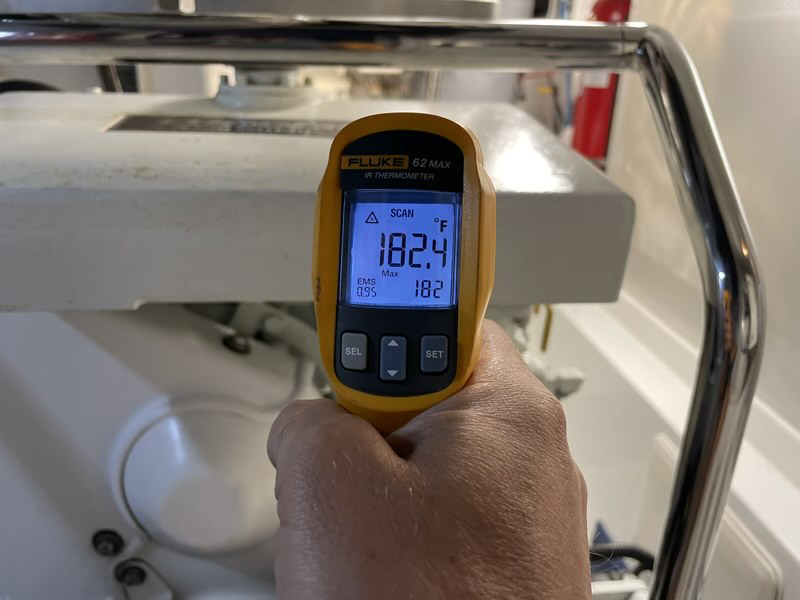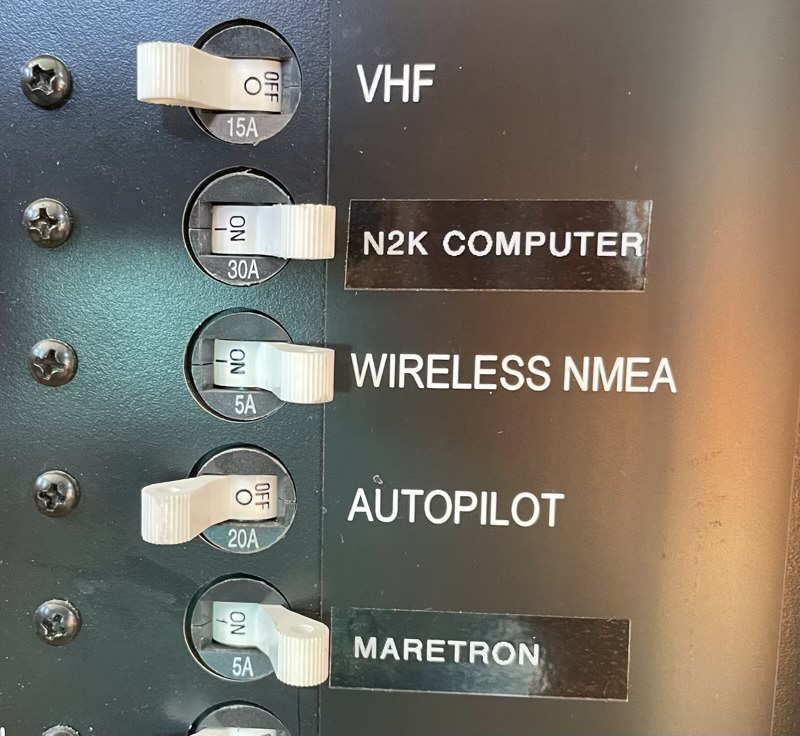One of the great joys of anchoring out in a beautiful bay is the free time you have to focus on lingering boat projects. When you’re away from the boat, these issues seem to stack up until a later day. But here in Hunter Bay in the beautiful San Juan Islands? I had plenty of time.
My focus of the day: a wiring problem lurking somewhere in the pilothouse that randomly kept flipping our Maretron system circuit breaker. This happened when I opened or closed the ship’s service panel door, so I suspected a loose wire somewhere.
I had done just about everything I knew to do: wiring checking and connection tightening, temperature reading with an infrared thermometer, voltage checking with a voltmeter, and wire tracing to the Maretron computer. It all seemed fine, which led me to think the breaker switch itself must be failing. This conclusion troubled me. The internet is full of caution about replacing a circuit breaker when the real problem is a short somewhere, akin to bringing down a new canary to your coal mine after the last one up and died.
As I pondered this dilemma, I watched a fellow trawler yacht drop its anchor out in the channel for at least the tenth time today. The boat left the anchorage early this morning, headed out of the bay, only to stop about 500 yards out and drift. They soon dropped their anchor again, but out in the middle of the channel. I thought initially they meant to do some fishing. But an hour later, the boat pulled up the anchor and headed out again, only to stop and drift, then redeploy their anchor. The process repeated all day. It sure seemed like engine trouble.
I decided to take a break from my circuit breaker problem and head over in the tender to see if I could lend a hand. The idea that I might help another boater with an engine issue would have been preposterous three years ago, but I’ve learned a lot since then. Who knows, but maybe I could help? At a minimum, I could tow them into the anchorage for the night.
I arrived alongside the boat to find a flustered skipper. The boat’s gas inboard was overheating, and he had run out of ideas on what could be wrong. It was the hottest day in history here in the northwest, and he was drenched in sweat. His first mate smiled, but looked worried.
We talked through the possibilities: clogged raw water intake? Good flow and no obstructions. Bad impeller? Replaced, though the old one looked fine. Coolant level? Topped off. He thought it must be a clogged or corroded heat exchanger. I asked him if he had an infrared thermometer to confirm it wasn’t just a bad gauge. He didn’t have one.
I motored back to the boat to retrieve my Fluke 62 Max IR thermometer. I learned the importance of carrying one of these indispensable gadgets aboard after our first Northern Lights Training class with Bob Senter. I take temperature readings of a half dozen areas in the engine room when I complete my routine checks underway. Knowing the baseline temperature of your coolant tank, stabilizer system, alternator, prop shaft, etc. can help identify potential problems early if something is running hotter than normal. These point-and-shoot thermometers can also verify temperature readings from digital and analog gauges that can sometimes produce erroneous, heart-thumping readings.

After checking all parts of the engine with the IR gun, the trawler skipper was able to confirm that his engine wasn’t overheating, despite a gauge in the pilothouse saying otherwise. It turns out he had pulled out a faulty temperature gauge on the flybridge last week and planned to replace it at some point. He reinstalled the non-working gauge, and voilà, the pilothouse gauge started working correctly again. He promised to buy an IR thermometer when he got back to his home port in La Conner. His smile as he waved goodbye was priceless.
I returned to my Indiscretion and my circuit breaker problem, feeling good about helping another boater in a jam. Lord knows I’ve been the recipient of some good boating Samaritans these past three years. I finally got to pay some of that goodwill forward. I inspected the circuit breaker again, thinking I would detach it from the ship’s service panel to see if I could detect any cracks or corrosion. That’s when I noticed the single screw that attaches the circuit breaker to the panel was loose. Really loose.
When I opened or closed the panel door, the loose screw allowed the circuit breaker to shift just enough to nudge the switch off. Tightening a single screw solved the entire issue.

I laughed at myself when I realized how simple the problem was. Sometimes we look too far beyond the most obvious solution in front of us. A faulty temperature gauge, a loose screw. As the old saying goes: “When you hear hoofbeats in the night, look for horses — not zebras.”
